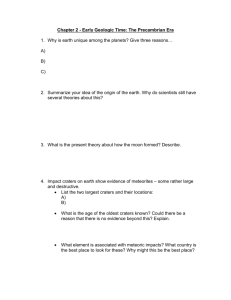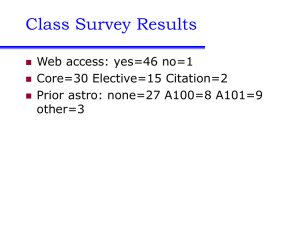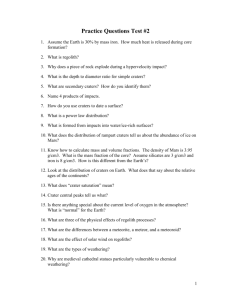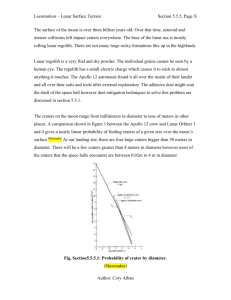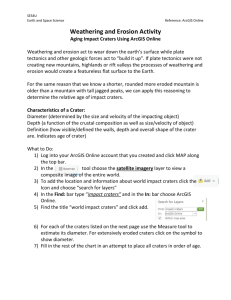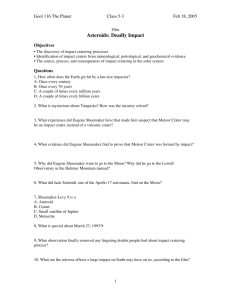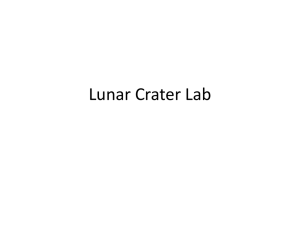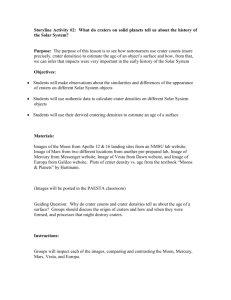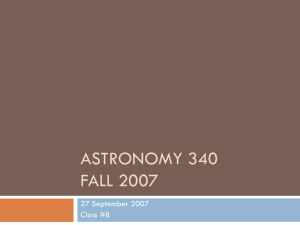Teacher`s notes
advertisement
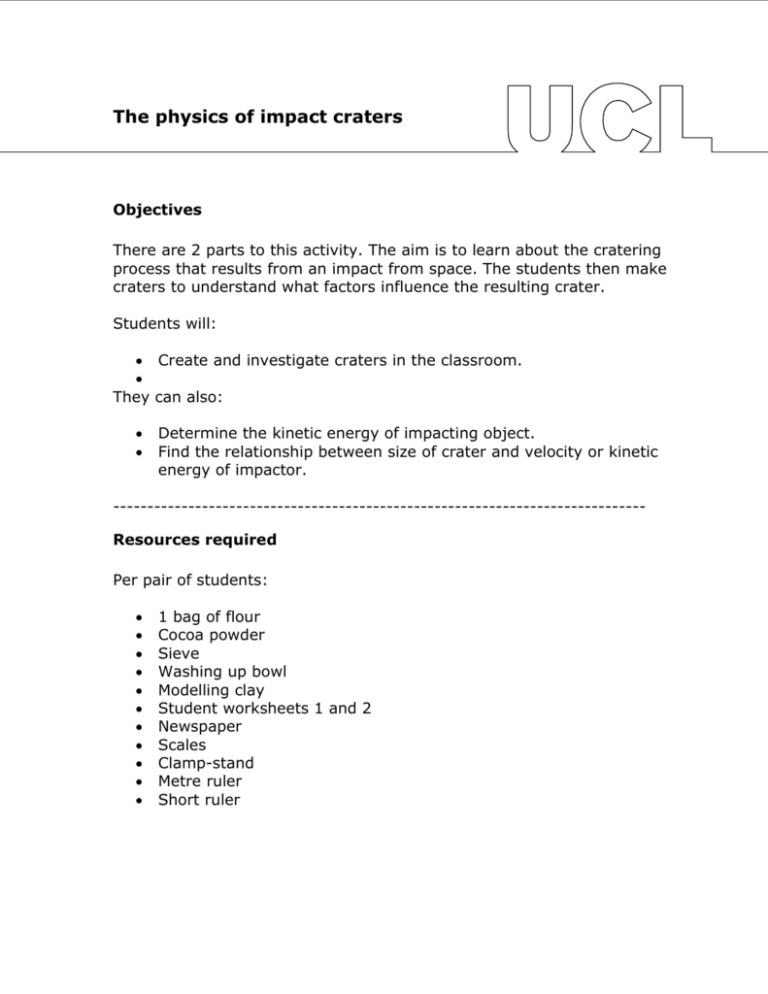
The physics of impact craters Objectives There are 2 parts to this activity. The aim is to learn about the cratering process that results from an impact from space. The students then make craters to understand what factors influence the resulting crater. Students will: Create and investigate craters in the classroom. They can also: Determine the kinetic energy of impacting object. Find the relationship between size of crater and velocity or kinetic energy of impactor. -----------------------------------------------------------------------------Resources required Per pair of students: 1 bag of flour Cocoa powder Sieve Washing up bowl Modelling clay Student worksheets 1 and 2 Newspaper Scales Clamp-stand Metre ruler Short ruler Teaching activities Introduction In this activity students will make craters in trays of flour covered with a dusting of cocoa powder using objects of different masses and different sizes. Craters are seen on many bodies in the Solar System most noticeably on the surface of the Moon. They are formed by an incoming object strike, for example an asteroid hitting the Moon. Discuss with the class that craters are seen on Mercury, Earth, Mars and asteroids. Craters have been studied in great detail and are important as they tell us about the history of the Solar System as well as helping us understand properties of different objects. Activity 1: making craters with different a 20g mass Spread the newspapers over the floor and give each small group or pair of students a washing up bowl with four and a top layer of cocoa powder. The cocoa powder is used so that the crater can be easily seen. They also need a clamp-stand with a metre rule clamped so that it is vertical with zero cm at the height of the talcum powder in the tray. Take the modelling clay and ask the students to make a ball that weighs exactly 20g, not 19.5g or 20.5g! Then drop the ball of clay into the flour and record the diameter of the crater formed when the ball is dropped from heights of: 25 cm 50 cm 75 cm 100 cm The surface of the flour will need to be levelled after each drop, maybe with a short ruler and a new layer of cocoa powder may be required too. The results can be recorded on the student worksheet 1. Students should also look out for any rays formed during the event. If rays are formed they should be counted and the length measured. Activity 2: making craters with different mass balls Repeat the above but with balls of different masses. Record results on student sheet 2. Extension activity: calculating the velocity and kinetic energy of impactor For an extension to this activity students could calculate the velocity of the ball when it hits the flour from the height it was dropped and knowing that that ball is accelerating under gravity. Speed on impact = acceleration x time From the velocity the kinetic energy can be calculated using: Kinetic energy = 1mv2 2 The crater diameter versus the height the ball was dropped from (or velocity if extension activity is done) can also be plotted to see if there is a relationship. Use a different symbol for each different mass ball. Student worksheet 1 Mass of ball = Height Crater diameter Ray length Student worksheet 2 Height of drop = Mass of ball Crater diameter Ray length
